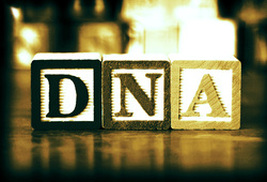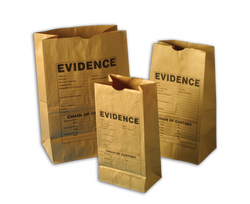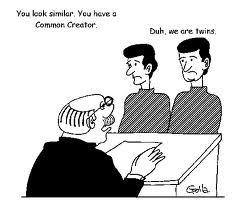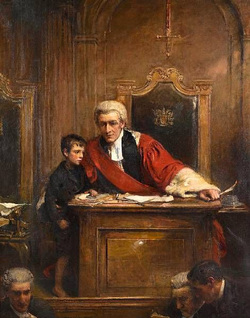Section 6 deals with relevancy of facts. They describe the various ways in which facts though not in issue are so related to each other as to form part components of the principal fact. There are facts which are related to each other as to form components of the principal fact. There are facts which are so closely or inseparately connected with the facts in issue they may be said to form part of the same transaction. Although the word gestae is not stated in section 6, the courts in Malaysia have applied this term and principle in our local cases.
In PP v Ahmad bin Ibrahim 2011 MLJU 921, it held that a transaction may constitute a single incident occupying a few moments or it may be spread over a variety of acts, declarations, occupying a much longer time and occurring on different occasions. They may also occur at the same place or different places. All these constituent incidents which though not strictly constituting a fact in issue, accompany and tend to explain and qualify the fact in issue. They form a chain as it were encircling the fact in issue. All the these facts are relevant to the fact in issue and therefore admissible in evidence. They are evidentially facts which render the existence or non-existence of a fact in issue highly probable.
It is important to bear in mind that what is admissible under section 6 are facts which are connected with the fact in issue as “part of transaction” under investigation. In order that different acts may constitute the same transaction, they must be connected by proximity of time, place, continuity of action and community of purpose and design. Whether the connection is sufficient to make a fact/facts part of the transaction or is too remote must always depend on the circumstances of the case.
The rule formulated in section 6 is expounded and illustrated in section 7, section 8 and section 9 of the Evidence Act 1950 and they should be read together. Relevancy has been described and Stephen says section 6 until section 11 are by far the most important and original part of the Act as they affirm positively what facts may be proved, where English Law assumes this to be known, and merely declares negatively that certain facts shall not proved. In testifying to the matters in issue, therefore witnesses must state them not in their barest possible form, but with a reasonable fitness of details and circumstances. These constituents or accompanying incidents are said to be admissible and forming part of the res gestae.
Prepared by Kang Khai Lun
 Judiciary system is implemented to safeguard the right of innocent people. Truth in each dispute should be ascertained before appropriate remedy could be given to claimant or victim. However, right of human should be reviewed in two faces of coin and thereon a fair play system should be able to cover the protection afforded to any suspect or even culprit. In order to uphold justice, science and law become interacted as forensic science had indeed closely linked with the administration of justice. Many scientific technologies have been applied in assisting investigation to elicit the truth. Without the assistance of those technologies, solving crime would be said to find a needle beneath an ocean.
Deoxyribonucleic Acid or DNA evidence is paramount evidence in identification. It would be highly incriminating against the accused as human being have distinct biological natures. If DNA found in identical with the accused, it would give a prima facie deduction that the accused has linked with the crime or present in the scene of crime. However, over stressing on the applicability of DNA would deny justice to the accused. Thus, DNA should only be referred as relevant evidence and standard of proving beyond reasonable doubt still lie on the burden of PP. Reliance on DNA evidence by the PP is so essential in persuading the court to accept it as material and conclusive evidence. In PP v Hanif Basree bin Abdul Rahman, DNA evidence has been debated until the apex court. The issue involved is whether the accused had sexual intercourse with the deceased. The vaginal swab of deceased revealed there accused was the major contributor for the seminal stain compared to tan unknown male. The court held that PP failed to prove that accused was the last person that had sexual intercourse with the deceased as the unknown man person also highly probable to the actual offender. The court referred to the DNA evidence found in the materials used to tie knots around deceased feet after the death. Therefore, DNA of accused could not be the conclusive evidence on convicting accused.
Could DNA standing alone is suffice for warranting a conviction against the accused? This question will be answered if DNA evidence alone is enough to prove the elements of crime actus reus and mens rea. The sole presence of semen on vaginal swab will not mean that accused has raped the victim. The sexual intercourse could be happened with consent. It is only proved in term of actus reus which is sexual intercourse. Actual intention of the accused on committing rape is left in doubt. Thus, DNA evidence alone is not sufficient if it is corroborated with a reasonable explanation by the accused. The weight attached to DNA evidence will be less significant. However, if the evidence found near the scene of crime and there is no defence from the accused, DNA evidence will be sufficiently reliable for conviction.
DNA evidence will not be admissible if there is proof of fabrication. Before DNA evidence is presented, the evidence will go through investigation and laboratory processes up until the tendering on evidence during trial. In my humble opinion, the chain of evidence might not be well-guarded as there is a possibility of the evidence being fabricated. Sometimes, even the defence council has failed to challenge the genuine of tendered DNA evidence as it is not a transparent process and there is a lack of proof on the part of defence. Thus, the notion that scientific proof never tells lies could not be the most accurate. Contamination of DNA evidence even can happen while the investigation process going on. Any person in the crime scene might lend a hand to the victim and causing fabrication of evidence. Even though the duty of collecting relevant evidence is assigned to the independent Forensic team, but there is no surety that all evidences will remain intact and fresh as if the crime had just happened.
Moreover, inaccuracy of DNA evidence might also occurred in the scientific conduct. The process involved in testing the DNA evidence would be definitely lengthy and complex. A small error at any stages of testing could impair the accuracy of evidence and causing mistaken judgment after trial. PP thereby should be able to convince the court on the correctness of evidence as it is so pertinent in safeguarding the accused from prejudiced. Furthermore, I opined that even though the accuracy of evidence tested in laboratory would be very high, but there is no one from the expert could 100% sure that identical DNA was genuinely from accused as human would not be free from error. Thus, DNA evidence must not be the sole evidence to warrant a conviction. It is merely a relevant fact and only becomes overwhelming significant after corroborated with other evidence.
Moreover, details of DNA evidence must be explained thoroughly by the expert maker. In addition to the details of DNA, procedures as how to conduct the test and he had arrived at the conclusion required to be disclosed for court determination. This is enshrined under s 51 Evidence Act 1950. Random occurrence ratio on similar DNA also considered a collateral weakness that might affect the evidential value of DNA evidence. In my opinion, despite DNA evidence would be relevant in proving a finding of guilt against the accused, it is not a definite evidence that could be solely reliable by the judge before imposing conviction. In other words, corroboration with others evidence is a must before a conviction warranted on the accused. Right of accused under judiciary system could not be strictly denied as the principle of law fortified that everyone is innocent until proven guilty. This presumption must be the frontier in putting the law in motion. Judges could not simply send the accused to the prison by merely based on the evidence of DNA.
LUM CHOI YUEN A129960
 Motive is the reason why a person does a particular act. It is not the same thing as intention. As stated by Lord Goddard CJ in R v. Steane; the motive of a man act and his intention in doing the act are, in law, different things. Edgar Joseph Jr SCJ in Lower Perak case stated that ''intention means seeking to do something and Is connected to purpose or object whereas motive is concerned with the reason for doing something''.
Illustration (a) Section 8 made clear in decide the relevancy of motive. Evidence to show motive is admissible to suggest that the accused is of bad character or that he has committed some crime other than the one with which he is charged. Such evidence is admissible under this section notwithstanding the provisions of Section 54 of the act. Section 54 Evidence Act 1950 provided the previous bad character not relevant except in reply. In criminal proceedings the facts that the accused person has a bad character is irrelevant, unless evidence has been given that he has a good character, in which case its becomes relevant.
In Wong Foh Hin v. PP, Wylie CJ stated that Evidence was admitted of an incident in May, 3 month before the daughter’s death. This was to the effect that the wife had previously complained to the Orang Tua that the appellant had interfered with the daughter and that the matter had been disposed of by the Orang Tua stating that, if this occurred again, the matter would be reported to the police. The appellant, the wife and the Orang Tua signed a document which was produced in evidence, recording, inter alia, the allegation and the warning about reporting to the police if this occurred again. The grounds of appeal concern solely the question whether the evidence of the incident in May, and the evidence suggesting a similar incident just before the daughter’s disappearance, were properly admitted. For the appellant , it was submitted that these pieces of evidence, suggesting, as they did, an incestuous relationship between the appellant and his daughter, amounted to evidence of bad character which, in the circumstances of the case, was inadmissible.
The part, however, does not in any way limit the generality of the first part, that evidence otherwise admissible is not rendered inadmissible merely because it tends to show bad character or the commission of another offense. The evidence objected to is clearly the strongest possible evidence of motive. This applies to the evidence of both incidents. For the evidence concerning the interview with the Orang Tua on the first occasion shows how strong the motive must have been when the wife went off in the night time on the second occasion. It showed that the applicant was likely to be very concerned that this time there would be a police investigation and the daughter would be the most important person the police would interview and the most dangerous from his point of view.
Although counsel for the appellant referred the court to English authorities, the position is the same under the Evidence Ordinance (Cap 43) and the evidence objected to is clearly admissible under Section 8 of that Ordinance which reads as follows. Section 54 deals with evidence of the character in these terms “ in criminal proceedings the fact that the accused person has a bad character is irrelevant, unless evidence has been given that he has a good character, in which case it becomes relevant”.
Prepared By: THAN CHONG SENG (JOHNSON) A122879
 Evidence adduced by a person other than the one who had actually perceived the facts of which evidence is given, is hearsay evidence. The Hearsay Rule is among the most debated and highly controversial rule of the law of evidence. The rule is not being directly laid under the Evidence Act 1950 but can be inferentially derived from the purport of certain of its provisions. Hearsay evidence is also described as out of court statement, for it is stated to be made outside the court to a person who in turn adduces it in the court.
Reasons advanced as to rejection of hearsay evidence are due to perceived dangers which results from nexus between witnesses’ testimony and the evidence the court is invited to accept. Such dangers arise from the probabilities of impaired perceptions, bad memory, ambiguity, and insincerity on the part of substitute witness. Reasons for inadmissibility of hearsay evidence coupled with diminished effectiveness of the conventional safeguards are:
1. The taking of oath by the witness before deposition.
2. The opportunity of cross-examination to probe the evidence.
3. The opportunity for the court to observe the demeanour of the witness while deposing in the court.
In addition hearsay evidence is not considered as the best evidence since it is feared that,
a) There are opportunities opened up for fraud through hearsay evidence.
b) That it results in the wastage of the courts’ time in listening to what may be gossip or rumours and
c) That there are chances of depreciation of truth in the process of repetition.
Many exceptions have also been made to the hearsay rule to mitigate its harshness and some of the exceptions are recognized by statute. In the Evidence Act 1950, the exceptions are contained under various provisions. Section 13 admits proof of a right or a custom in an indirect form on grounds of relevancy. Under Section 18-21, indirect admission by agents or by interested persons or by persons expressly referred to by the parties, are made relevant. Under Section 32, the statements of relevant facts, although hearsay, are admitted through substitute witnesses, if the original witness is dead or has been incapable of giving evidence, or cannot be found, or his attendance in the court cannot be procured without an amount of unreasonably expense or delay.
Section 33 shows that evidence adduced in earlier proceedings has been made admissible in subsequent proceedings without the need to call the witness in the court. Entries in the books of account in the course of business and the entries in the public records are made relevant under Section 34 and 35 respectively. The statements under maps, charts and plans are made relevant under Section 36. Under Section 37, the official records of public nature are made relevant. The difficulties in invoking these exceptions are resolved by applying the test of reasonability and common knowledge. Courts also found that the statutory exceptions are insufficient in certain situations to administer justice. In mitigating the rigour of the Hearsay Rule, in cases not covered under the statutory exceptions, the courts invoke their creative acumen and evolve what may be termed as judicial innovations in the form of exceptions.
Therefore, it can be concluded that the word hearsay is not a magic wand which can ensure non-admission of only unreliable and irrelevant evidence. Justice may be miscarried if relevant and reliable evidence is left out for being hearsay. Reliance shall have to be placed on the credibility or reliability in evaluating the evidence even when it is indirect.
PREPARED BY: KIRUBINI A/P G.SUBRAMANIAM A130056
 Relevancy is a concept that runs through the Evidence Act 1950. Section 5 declares what is relevant evidence, i.e. only evidence that is declared relevant by the Act and ‘of no others’. The significance of this section is apparent. Whatever is not provided for in the Act is irrelevant and therefore inadmissible. Consequently, only evidence declared relevant by the Act can be considered as judicial evidence.
Section 136: Court to decide as to admissibility of evidence.
Section 165: Judge has power to put questions about any fact relevant or irrelevant, but the judgement must be based upon facts declared by the Evidence Act to be relevant and duly proved.
PP v Dato’ Seri Anwar Ibrahim (No: 3) [1999] 2 MLJ 1
Fact in issue must be relevant to fact in issue
PP v. Haji Kassim [1971] 2 MLJ 115 (Federal Court)
Whatever is logically probative is not necessarily admissible in evidence unless it is declared so under the Act.
Section 5 is the backbone of the Evidence Act. It gives evidence of facts in issue and facts that are relevant to the facts in issue as herein after declared section 6 – 55 and of no others. It can be read together with section 136 where the judge can ask in what way is the evidence relevant to the facts in issue – as exercised by Augustine Paul J in the Dato’ Seri Anwar Ibrahim’s case. If the judge asked the lawyer about relevancy under section 136, you should direct the judge’s mind to section 5.
Section 5 declares what is relevant evidence, i.e. only evidence that is declared relevant by the Act and “of no others”. The significance of this section is apparent. Whatever is not provided for in the Act is irrelevant and therefore inadmissible. Consequently, only evidence declared by the Evidence Act, 1950 could be considered as judicial evidence in Malaysia. Section 5 must be read with section 136(1) of the Act.
Augustine Paul J in PP v. Dato’ Seri Anwar bin Ibrahim(No3) [1999] 2 MLJ 1, 170 (HC) held:
“Questions of admissibility of evidence are questions of law and are determinable by the judge. If it is the duty of the judge to admit all relevant evidence, it is no less his duty to exclude all irrelevant evidence. Section 5 of the Evidence Act, 1950 declares that evidence may be given in any suit or proceedings of the existence or non-existence of every fact in issue and of such other facts as declared to be relevant under the provisions of the Evidence Act, 1950. The judge is empowered to allow only such evidence to be given as is, in his opinion, relevant and admissible and in order to ascertain the relevancy of the evidence which a party proposes to give, the judge may also ask the party proposing to give evidence, in what manner the alleged facts, if proved, would be relevant, and he may then decide as to its admissibility.
PREPARED BY: KIRUBINI A/P G.SUBRAMANIAM A130056
 Section 7 Evidence Act 1950
Facts which are the occasion, cause, or effect, immediately or otherwise, of relevant facts, or facts in issue, or which constitute the state of things under which they happened, or which afforded an opportunity for their occurrence or transaction, are relevant.
Illustrations
(a) The question is, whether A robbed B.
The facts that, shortly before the robbery, B went to a fair with money in his possession, and that he showed it or mentioned the fact that he had it, to third persons, are relevant.
(b) The question is whether A murdered B.
Marks on the ground, produced by a struggle at or near the place where the murder was committed, are relevant facts.
(c) The question is whether A Poisoned B.
The state of B’s health before the symptoms ascribed to poison, and habits of B, known to A, which afforded an opportunity for the administration of poison, are relevant facts.
This Section makes a large number of collateral facts which do not form part of the transaction itself relevant. For example, a contemporaneous tape recording of a relevant conversation is relevant and can be used to confront a witness or shake his credit. (Dial Singh Narain Singh v. Rajpal Jagan Nath) However, such a recording must be treated with caution.
In State of Maharashtra v. Ramdas Shankar Kurtekar, it was held that the only plausible explanation of how a tape (in the absence of any other explanation) had music both before and after the taped conversation was that it had been tampered with. In R v. Richardson, the fact that the deceased girl was alone in her cottage at the time she was murdered was held to be relevant as it constituted the occasion of the murder and footprints at the location of shoes which had been mended with iron knobs or nails were held to be one of the effects.
In Indian Airlines v. Madhuri Chaudhari, the Calcutta High Court held that the report of the Enquiry Commission regarding an air-crash was relevant in establishing the cause of the accident. In Rattan v. Reginam, the fact that a man who had murdered his wife had been having an affair was held to be relevant as being the state of things or background in which the crime occurred.
However, a fact in issue cannot be proved by similar facts which are not a part of the same transaction merely by virtue of Section 7.
Prepared By: THAN CHONG SENG (JOHNSON) A122879
The answer is affirmative. As in Kartigeyan A/l Krishnan v Pendakwa Raya [2012] MLJU 589, Syed Ahmad Helmy Syed Ahmad JCA held that it was not in dispute that the prosecution's case regarding to the charges of rape and murder in that case rests entirely on circumstantial evidence. At this juncture it was appropriate to recapitulate the three tests applicable in relation to circumstantial evidence as propounded by the Supreme Court of India in Chandmal & Anor v State of Rajasthan AIR [1970] SC 917 and approved by our Federal Court in Magendran Mohan v PP [2011] 1 CLJ 805 at page 815 namely:-
"Firstly, the circumstances from which an inference of guilt is sought to be drawn, must be cogently and firmly established.
Secondly those circumstances should be of a definite tendency unerringly pointing towards the guilt of the accused.
Thirdly, the circumstances taken cumulatively, should form a chain to complete that there is no escape from the conclusion that within all human probability the crime was committed by the accused and no one else. That is to say the circumstances should be incapable of explanation on any reasonable hypothesis save that of the accused's guilt."
In evaluating the circumstantial evidence of the case the judge will took into consideration the circumstances prior and post the crime. In Kartigeyan A/l Krishnan v Pendakwa Raya [2012] MLJU 589 where charges of rape and murder involved, the court had relied on the evidences given by the forensic pathologist, the person who last saw the accused and alive deceased together, the DNA evidences produced by the chemist and other relevant circumstantial evidence to convict the accused for the offences of rape and murder. The forensic pathologist who examined the deceased in that case gave testimony as to the injuries inflicted, the cause of death and also the estimation as to the time of death. The injuries and the cause of death were vital to establish the guilt of the accused where actus reus and mens rea of the accused may be formulated. From the evidences given by the forensic pathologist, the injuries were caused by a human being conduct e.g bite marks on the victim tongue, injury to genitalia and multiple soft tissues on the body with pattern consistent with that due to direct blow impact occasioned by the usage of heavy and hard object which leaded to the cause of death - head injury due to blunt trauma. The time which the person who last saw the accused and the deceased together was jibe with the estimation as to the time of death estimated by the forensic pathologist. The inference would be that the accused was the only person with the deceased when the deceased was assaulted until her death. On the other hand, the chemist found semen belonged to the accused in the deceased vagina through the DNA test. This would infer to us that there was sexual intercourse occurred between the accused and the deceased and the injury to the genitalia would infer to us that the sexual intercourse was done without consent. Moreover, the time where the other body part injuries inflicted was jibe with the time where the injury to the genitalia inflicted.
Hence, based on the injuries inflicted and the cause of death of the deceased and any other relevant circumstantial evidences, the court had found that there was beyond reasonable doubt that the accused had raped the deceased and murdered her and upheld the conviction and sentence.
by KANG KHAI LUN A130454
 Similar fact evidence is prima facie admissible evidence? If yes, to what extent? This question can be well-examined if we consider the balance of probative value and prejudice value. Generally, irrelevant evidence is not admissible as prima facie evidence unless there is ‘additional value’ used to increase the value of weight attached in the tendered evidence. Cross has enunciated that probative force possessed by similar fact evidence squarely depends on three factors, viz: (a) cogency of evidence in showing bad disposition of the accused, (b) strength of the proof in making inference and (c) degree of relevancy between drawn inferences with the fact in issue. Those elements are prominently highlighted in striking similarity of evidence or relevant fact as coined by Lord Goddard CJ in R v Sims. Hence, if any similar fact evidence tendered for court proceeding, court will be the sole party to determine the admissibility of that particular evidence. In order to guide the judge in making an impartial decision, probative value and prejudice value will be considered. Thereon, if the latter value is more overwhelming compared to the former, adverse effect created towards the accused will be the seed of injustice. The similar fact evidence must be rejected in toto.
In a deep discussion on similar fact evidence, normal question that always plays in our mind is why the accused should be acquitted since he or she was committing the same offence in the past. Public benefit should be considered in parallel with the probability of offender in committing same offence. However, we must bear in mind that any misconduct or bad behavior committed by accused in the past should not be a justifying ground for imposing heavier punishment. One thing that we should remember is that any bad disposition of the accused has no linkage with the current indictment. This has been well-illustrated in the case of Makin v A-G for New South Wales, whereby the prosecution is forbidden to adduce evidence tending to show the accused has been guilty of other misconducts or criminal acts outside the coverage of offence charged. Thus, similar fact evidence might be relevant, but the attached value of weight is much lower than other type of evidence. It should be corroborated with other relevant facts as it could not stand on its own weight. Interrelation with other relevant facts is a precondition for the judge in determining the admissibility of similar fact evidence.
In conclusion, similar fact evidence could be accepted by the judge for attaining a fairer decision since it is applicable for reference in certain circumstances and eventually becomes a part of prima facie evidence. However, similar fact evidence might be abused and eventually creates an adverse inference over the accused in present indictment. If this is allowed to be happened, hidden danger on infringing the law presumption will be created. Heart of legal system will be totally damaged if either presumption of innocence until proven guilty or any doubt created in favour of accused has been abandoned. Spirit and functional purpose of legal system will be impaired if the hidden danger left with abuse by certain judges. Thus, even though there is no exhaustive list in identification of prima facie evidence. The yardstick that must be considered is no more than the balance of probative and prejudice values.
Prepared by
Lum Choi Yuen ^^
A129960
 Res gestae (a Latin phrase meaning "things done") is an exception to the rule against Hearsay evidence. Res gestae is based on the belief that because certain statements are made naturally, spontaneously and without deliberation during the course of an event, they leave little room for misunderstanding or misinterpretation upon hearing by someone else (i.e. by the witness who will later repeat the statement to the court) and thus the courts believe that such statements carry a high degree of credibility. Statements which can be admitted into evidence as Res gestae fall into three headings:
1. Words or phrases which either form part of, or explain a
physical act,
2. Exclamations which are so spontaneous as to belie
concoction, and
3. Statements which are evidence as to someone's state of mind.
(In some jurisdictions the Res gestae exception has also been used to admit police sketches.)
The principle underlying Section 6, the following is sometimes termed as res gestae. This phrase means simply a transaction, ''thing done'', ''the subject matter'', ''res gestae” of any case properly consists of that portion of actual world’s happenings out of the right or liability, complained or asserted in the proceeding, necessarily, arises. Apparently the phrase is well established in the Evidence Act 1950. It is necessary therefore, to understand what it really means. That has been used in two senses. In the restricted sense it means world’s happening out of which the right or liability in question arises. In wider sense it covers all the probative facts by which res gestae are reproduced to the tribunal where the direct evidence of witness or perception by the court is unattainable. In restricted meaning res gestae imports the conception of action by some person producing the effects for which the liability is sought to be enforced in action. To be clear, in the restricted sense ''facts which constitute the res gestae must be such as so connected with the very transaction or fact under investigation as to constitute a part of it''.
Whatever act or series of acts constitute, or in point of time immediately accompany and terminate in. The principal act charged as an offence against the accused from its inception to its consummation and whatever may be said by either of the parties during the continuance of the transaction, with reference to it, including herein what may be said by the suffering party, though in absence of the accused during the continuance of the action or the latter, form part of the principal transaction and may be given in evidence as part of res gestae of it. While, on the other hand, statements made by the complaining party, after all action on the part of wrong-doer has ceased and some time has elapsed do not form part of res gestae and should be excluded.
Section 6 of the Evidence Act 1950 states that,''facts which, though not in issue, are so connected with a fact in issue as to form part of the same transaction, are relevant, whether they occurred at the same time and place or at different times and places''
This section admits those facts the admissibility of which comes under the technical expression res gestae [i.e., the things done (including words spoken) in the course of a transaction], but such facts must ''form part of the same transaction.'' If facts form part of the transaction which is the subject of enquiry, manifestly evidence of them ought not to be excluded. The question is whether they do form part or are too remote to be considered really part of the transaction before the Court. A transaction is a group of facts so connected together as to be referred to by a single legal name, as a crime a contract, a wrong or any other subject of inquiry which may be in issue. Roughly, a transaction may be described as any physical act, or a series of connected physical acts, together with the words accompanying such act or acts. Every fact which is part of the same transaction as the fact in issue is deemed to be relevant to the fact in issue although it may not be actually in issue, and although if it were not part of the same transaction it might be excluded as hearsay.
Prepared By: THAN CHONG SENG (JOHNSON) A122879
 It depends.
According to Section 2 of the Evidence of Child Witness Act 2007, “child witness” means a person under the age of sixteen years who is called or proposed to be called to give evidence in any proceedings but does not include an accused or a child charged with any offence.
A child can be invited to make a sworn or unsworn statement depend on the findings of the court. When a child of tender years is proposed as a witness, preliminary examination by the court is necessary. The court must first determine whether the witness oath can be administered to a child. In preliminary examination, the court must satisfy that the witness knows the means of taking oath and giving evidence in court, the witness understands the consequences of lying, the witness knows the duty to tell the truth under oath, and the witness possesses sufficient intelligence whereby he understands the questions put to him and able to give rational answers to the questions asked. The burden of proof is on the party who produce a child witness. The witness should be cautioned to speak the truth, the whole truth and nothing but the truth. The findings of the court in preliminary examination should be recorded. Failure to conduct a preliminary examination is a fatal omission in the case.
Section 133A of the Evidence Act 1950 provides guidelines in dealing with a child witness. First, the child must be rejected as a witness if the court finds that the child does not understand the nature of an oath and at the same time is not possessed of sufficient intelligence and does not understand the duty of speaking the truth. Second, if the court finds upon preliminary examination that the child understand the nature of an oath, the child could be allowed to take the oath and give evidence. Third, if a child does not understand the nature of an oath, the child may be permitted to give unsworn statement if the court is of the opinion that the child is possessed of sufficient intelligence and understand the duty of speaking the truth. An unsworn evidence is receivable in court provided that it was taken and reduced into writing in accordance with Section 269 of the Criminal Procedure Code.
A child may be testify by having a screen between him and the accused; by live link; by video recording; testify through an intermediary; or accompanied by an adult when testify in the court. These privileges given to a child witness to protect their interest and to make the court atmosphere child friendly.
However, a child's statement should be treated with care and cautions. The credibility of a child witness is subject to further arguments. The general perception has been that young children are not particularly reliable.
Scientific research by Researchers Valerie Reyna, Human Development Professor; and Chuck Brainerd, Human Development and Law School Professor, both from Cornell University in the years of 2008 shows that children's memory may be more reliable than adults' in court cases. http://www.sciencedaily.com/releases/2008/03/080313124445.htm
This was affirmed by another scientific research by Witness Psychologist, Gunilla Fredin at Lund University in Sweden in the years of 2011 which shows that children are more reliable eyewitnesses. Young children who witness crimes are good at recounting the events, even though younger children include fewer details than older children and adults, but what they say is more accurate. Older children and adults have had more experiences and can therefore find it difficult to differentiate between reality and fiction. http://www.sciencedaily.com/releases/2011/09/110909111528.htmPrepared by: TAN SHOO MAY A 130299
|








 RSS Feed
RSS Feed